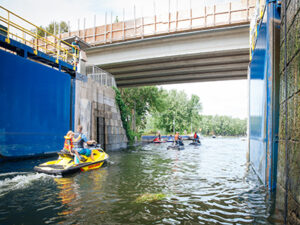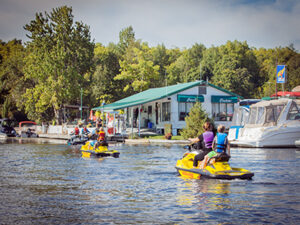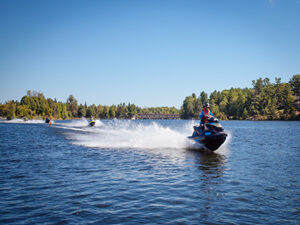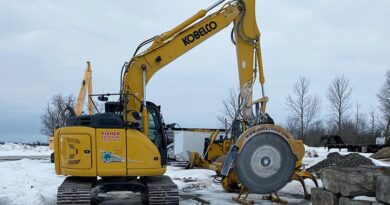Getting Started: Personal Watercraft Riding
How does a novice get started personal watercraft riding? I’m talking about someone who has a casual curiosity, hasn’t been on one, and maybe hasn’t done much recreational boating. If this is you, here’s how to get started…
Marine Experience
What previous boating experience do you have? Are already a recreational boater, angler or cottager? Are you comfortable around the water, growing up at a family cottage, summer camp by a lake, or doing some swimming, water sports or paddling?
The point here is a frank self-appraisal about your marine experience and familiarity. Not having any doesn’t mean you shouldn’t start personal watercraft riding. It just means you’ll also need to learn about being on and near the water – and how to make yourself a safe PWC rider.
Powersports Experience
If you don’t have much marine know-how, what about land-based motorsports, such as snowmobiling, ATVing or motorcycling? Familiarity with any of these activities will help with personal watercraft riding. Understanding throttle and brake levers, knowing body English and balance, being comfortable with handlebar steering and how engine power feels are valuable PWC assets. So are any mechanical/troubleshooting skills, riding etiquette or fuelling tips you’ve picked up along the way.
Visualize Yourself
How do you picture yourself on a personal watercraft? Do you see using it primarily for casual family outings around your cottage? To visit neighbours, or as a tender for your cruiser? Do you visualize mainly playing with it, doing tricks or tow sports? Or maybe you envision cruising various waterways or even going on a PWC tour. Finally, do you see operating a PWC primarily for your own riding or sharing with other operators? Will it be more of a multi-passenger vehicle? If you don’t always want to ride double, your future may include more than one personal watercraft.
Practical Logistics
Next, consider where you live and will be doing your PWC riding most often. Unless you actually reside waterside with a dock or nearby marina, where do you keep it? Do you have space to park a PWC at home? At the cottage? On water or off? How will you get it back and forth to the water? For dealer service? You may need a personal watercraft trailer. Where will you keep that? What will you tow it with and where will you store your PWC(s) and trailer in the off-season?
Try It First
Before shopping for a personal watercraft, get insights and advice from PWC-owning friends. You’ll also discover

PWC and riding tips on my Intrepid Cottager website. Visiting area PWC dealerships online or in person can help in familiarizing what brands and models are available and which might suit you best. If you’ve never operated a PWC before, I also recommend trying it first. You can do this with a friend who has one, by renting one for a couple of hours, or on a dealer demo.
Shopping Tips
Before buying your personal watercraft, ask two other questions: “What brand?” and “Which model?” Many times the brand you choose will depend on what dealer you may have a pre-existing powersports relationship with, or which one is closest to you. Or the one friends recommend or has what you want in stock at the best price. If you decide to buy used privately, I’d suggest taking a knowledgeable friend with you and test riding it before closing the deal.
Entry level PWC’s are an excellent choice if family fun or playing on your cottage lake is your priority. If your goal is doing day rides, tow sports or saddlebag tours, a bigger and more stable PWC with more storage and fuel capacity may be a better fit.
Candid answers to all of these questions will help getting stated with personal watercraft riding easier and

more enjoyable. Hopefully, it will also make all those dazzling colours and appealing graphics less of a distraction from the reality of what you really need!
Want to learn more? Find everything you need to know about PWC riding at intrepidcottager.com.
By Craig Nicholson, The Intrepid Cottager,
Photos by Allan Glanfield




